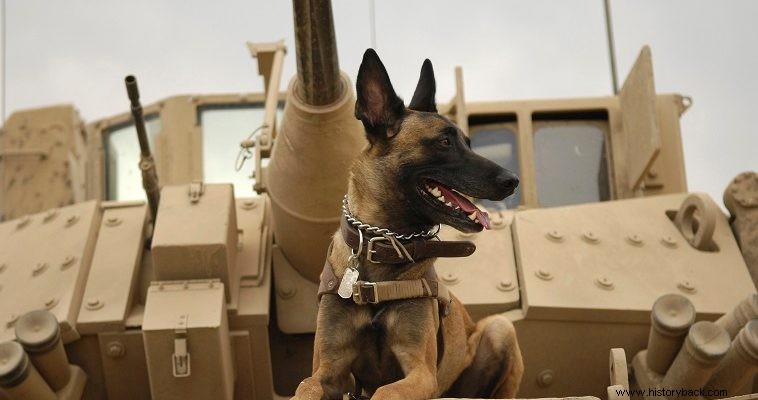
As in hunting, so in war, which in a sense was an extension of it, the dog accompanied man, providing valuable services, both as a guard, and in some cases, as an impact weapon!
Teams of domesticated dogs accompanied the early warriors and attacked opponents based on their cow instinct. Later the dog simply assumed guard duties, tasked with "signaling" the alarm.
In the 16th century AD but dogs fought again on the battlefield, on the side of the Spanish Conquistadors, against the Indians in America. Saint Bernard rescue dogs are also famous, as well as the "anti-tank" dogs used by the Soviets in World War II.
The main characteristic of dogs is the devotion they show to their master, whom they consider the leader of their pack, a devotion that reaches the limits of self-sacrifice. Humans also exploited this very feature, from the late Paleolithic era, when we have the first signs of their domestication.
War dogs are thought to have been previously used by the peoples around the Caspian Sea. Later they were also used by the Iberians and the Gauls. The Ionian inhabitants of the city of Magnesia had provided each of their hoplites with a dog, during the war against Ephesus, in the 6th century BC. An unnamed dog was also anointed a hero, following his master on the battlefield of Marathon in 490 BC.
The Roman writer Aelianus (2nd-3rd century AD) mentions that the dog fought by his master's side on the battlefield, tearing apart with his teeth any Persian who engaged him.
The same author mentions that the image of the dog was depicted together with the rest of the Marathon fighters in the Diverse Gallery of Athens. Xerxes also brought hundreds of war dogs with him during his campaign in Greece in 480 BC.
The Lydian king Alyates also repulsed a Cimmerian raid with his cavalry and war dogs, who attacked the opponents' horses and put them to flight.
